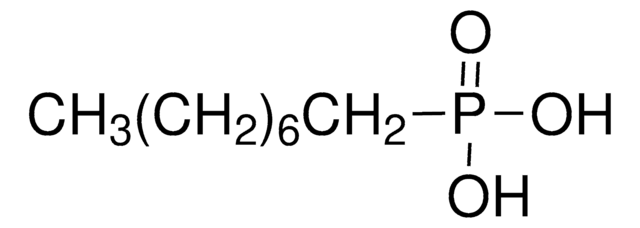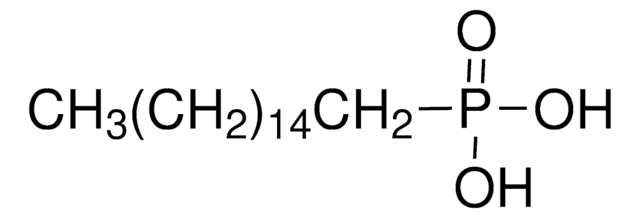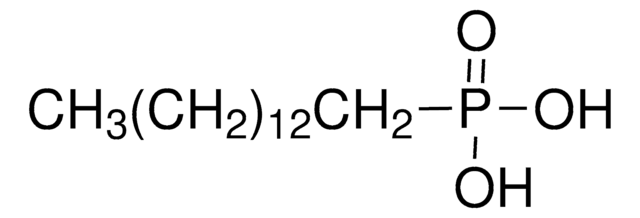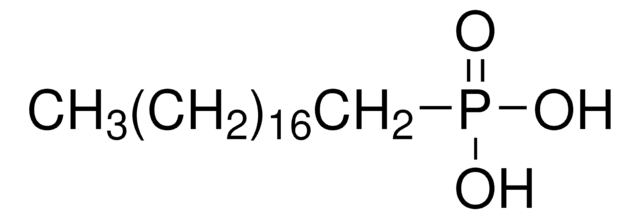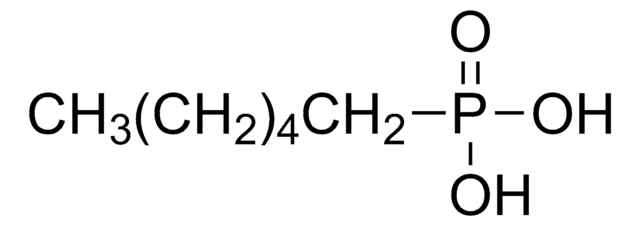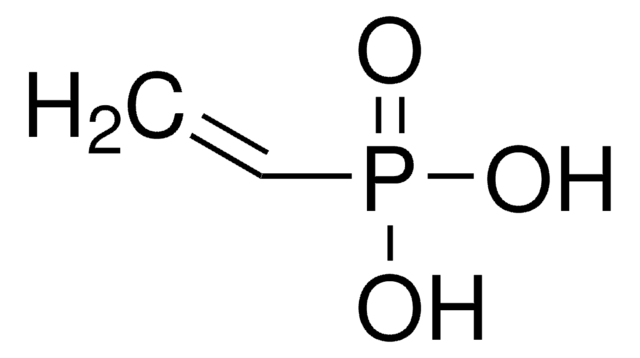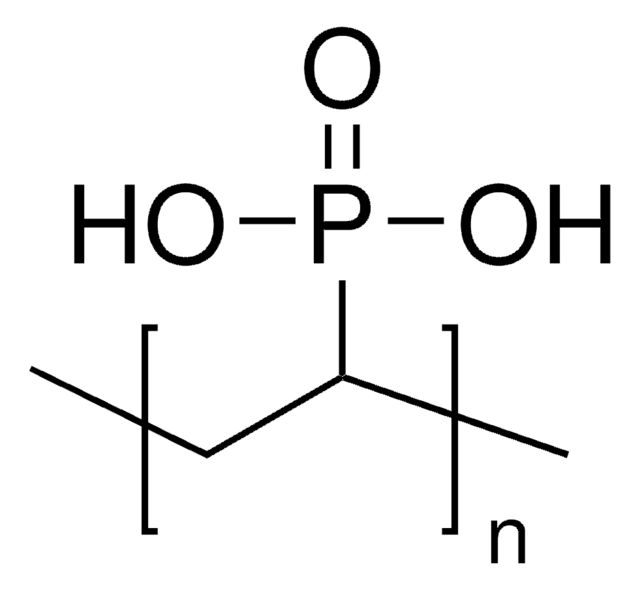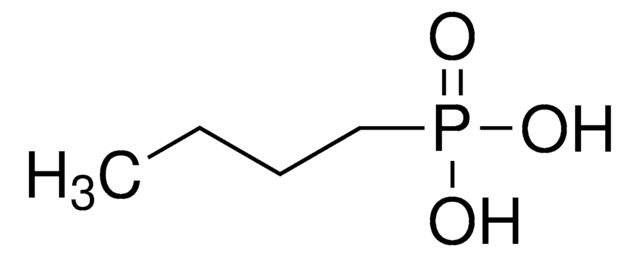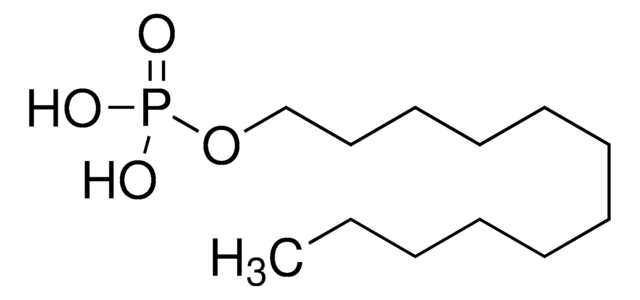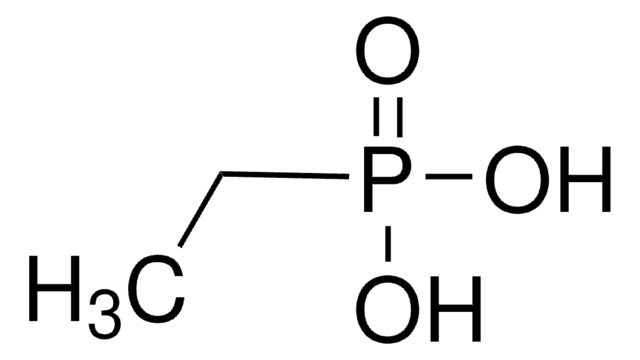737925
Decylphosphonic acid
97%
Synonym(s):
n-Decylphosphonic acid
About This Item
Recommended Products
Quality Level
assay
97%
form
solid
mp
96-101 °C
SMILES string
CCCCCCCCCCP(O)(O)=O
InChI
1S/C10H23O3P/c1-2-3-4-5-6-7-8-9-10-14(11,12)13/h2-10H2,1H3,(H2,11,12,13)
InChI key
DZQISOJKASMITI-UHFFFAOYSA-N
Related Categories
General description
Application
signalword
Danger
hcodes
Hazard Classifications
Skin Corr. 1B
supp_hazards
wgk_germany
WGK 3
flash_point_f
Not applicable
flash_point_c
Not applicable
Certificates of Analysis (COA)
Search for Certificates of Analysis (COA) by entering the products Lot/Batch Number. Lot and Batch Numbers can be found on a product’s label following the words ‘Lot’ or ‘Batch’.
Already Own This Product?
Find documentation for the products that you have recently purchased in the Document Library.
Customers Also Viewed
Articles
There is widespread demand for thin, lightweight, and flexible electronic devices such as displays, sensors, actuators, and radio-frequency identification tags (RFIDs). Flexibility is necessary for scalability, portability, and mechanical robustness.
Our team of scientists has experience in all areas of research including Life Science, Material Science, Chemical Synthesis, Chromatography, Analytical and many others.
Contact Technical Service
